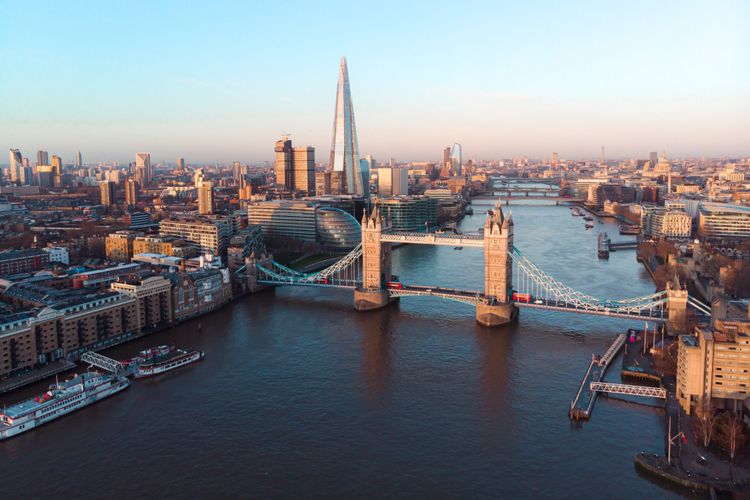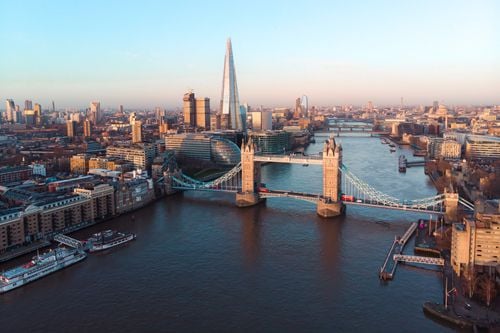So, of course, children seeing these dragons for the first time can't help but make the connection with the fantasy worlds of their reading and daydreaming. Is this an illustration of an adventure from the Harry Potter heptalogy? In the world of Norbert Dragonneau, also imagined by J.K. Rowling, the mother of the budding wizard? Or in the world of Walter Scott, the inventor of the historical novel, or Arthur Conan Doyle, the father of Sherlock Holmes? These are the references that come to mind first when you're a child. Or a tourist who doesn't know much about England. But the truth is quite different.
Dragons have always lived in London. As they keep a low profile, their presence is neither invasive nor necessarily visible to those who don't want to see them, but there they are, like guardians of the temple. Frozen in time, unshakeable, making a mockery of the weather. So their presence inevitably intrigues, especially children and tourists. But adult Britons know exactly what they're talking about. There's a dragon in him.
The dragons we're talking about here are proud and big, about the size of a man. There are 10 of them, and they are stationed in strategic locations around the City, where they keep watch. For the City is the historic heart of the city, the Londinium of old. And these dragons are their sentinels.
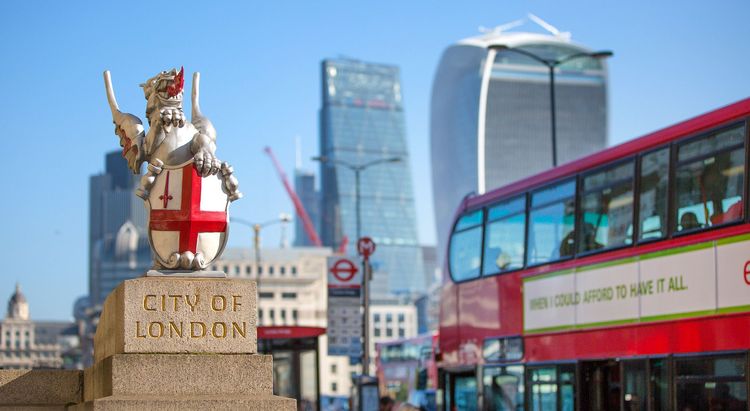
Un des deux dragons argentés sur les bords de la Tamise.
- © IR Stone / 123RFThe link between the British and their dragons.
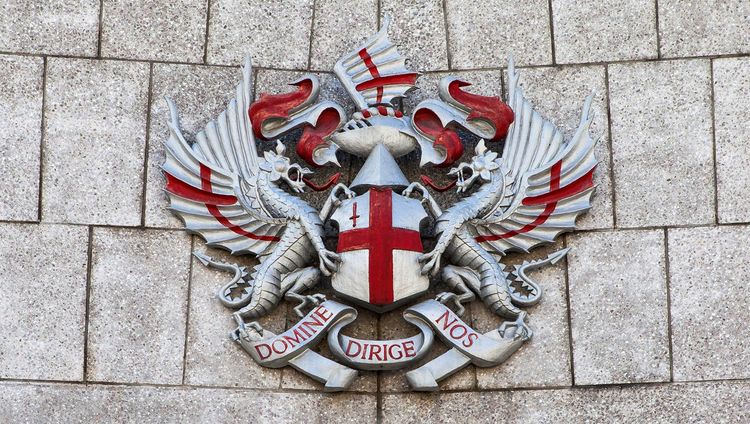
Les armoiries de Londres flanquées au mur de l'Hôtel de Ville (Guildhall) de la City
- © Chris Dorney / 123RFThe dragon is linked to the country's history, and therefore to its imagination. It is the main symbol on the coat of arms of the City of London, just as the lion is on the royal crown. This dates back to the Middle Ages, when the dragon, an imaginary but nonetheless frightening creature, embodied the bravery and power that the King's knights were supposed to possess, and they even used them in their own coats of arms, or had them soldered onto their helmets in the form of figurines. When something scares you, it's better to use it rather than suffer from it.
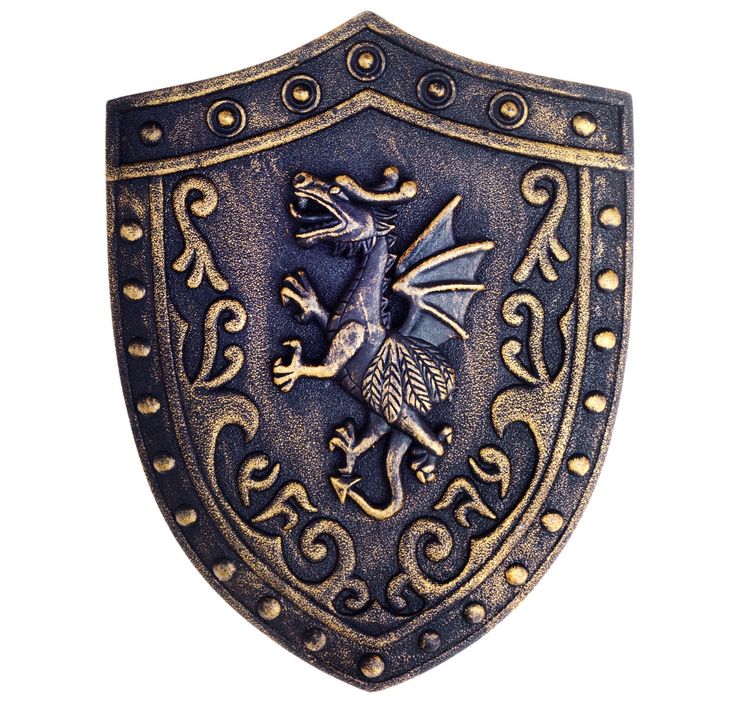
Dragon représenté sur un bouclier métallique.
- © Denis Kovin / ShutterstockIn the 6th century, the legend of King Arthur, as recounted by Geoffrey of Monmouth in his "History of the Kings of Brittany" (Brittany being the south of England at the time), makes him a descendant of dragons, no less! She gave him a name: Arthur Pendragon, so that there could be no doubt about his ancestry!
The dragons of London
King Arthur's coat of arms was adorned with a flying dragon, and the City's ten dragons bear this heritage. The most famous, because it is perched on a very high pedestal which makes it dominate, conquering, the crowd of onlookers, is on the Temple Bar (not to be confused with the famous Dublin bar!).
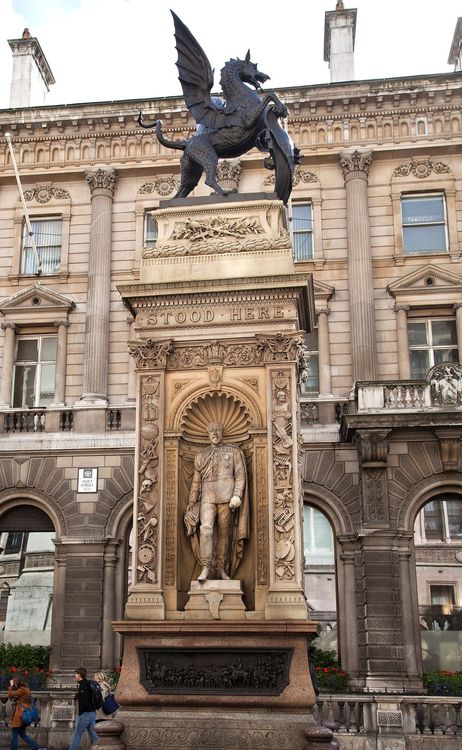
The Temple Bar, on Strand Street, one of London's landmarks.
- © Dragan Jovanovic / ShutterstockThis square column also bears on each of its sides a statue of Queen Victoria and another representing her son, Edward VII. This dragon, which bears the City's coat of arms under its feet, is improperly called a "griffin" by Londoners (the griffin has the head of a bird of prey), perhaps to distinguish it from the two dragons of Victoria Embankment on the banks of the Thames.
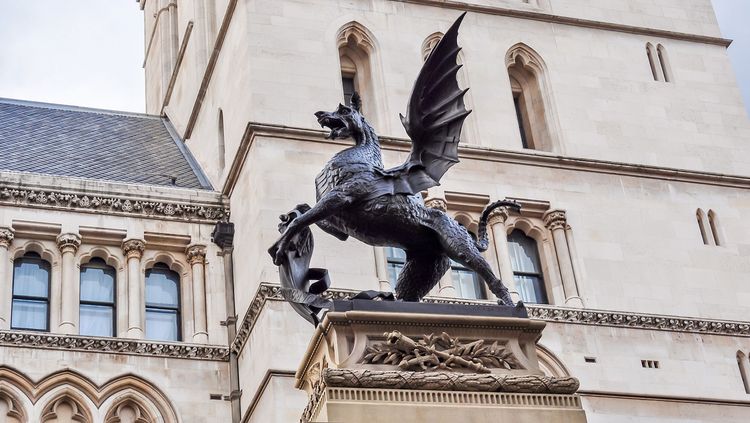
As we've seen, dragons are the guardians of the City. So they're planted at its historic entrances: Blackfriars Bridge Gate, Moorgate, Aldersgate, Bishopsgate and Temple Bar. The two dragons on Victoria Embankment are dazzling. Silver in colour, they hold a light cream-coloured bulwark adorned with a large red cross and an equally scarlet dagger, the City's coat of arms.
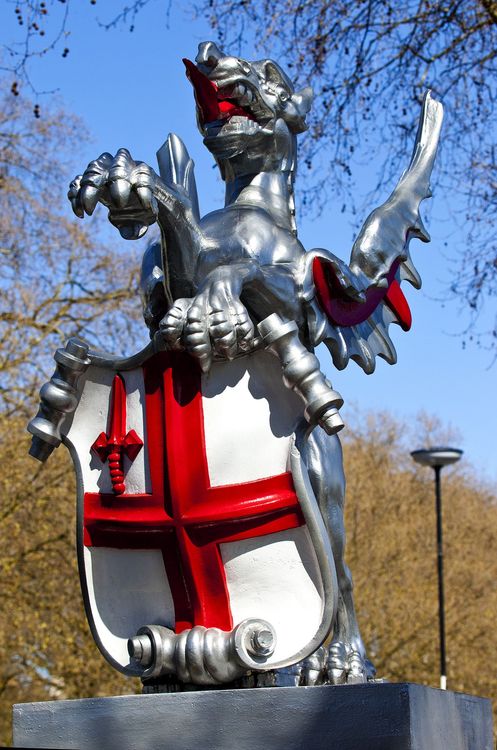
These dragons mark the western gates of the town. They have been in place since 16 October 1963, as evidenced by the commemorative plaque nailed to their pedestal.
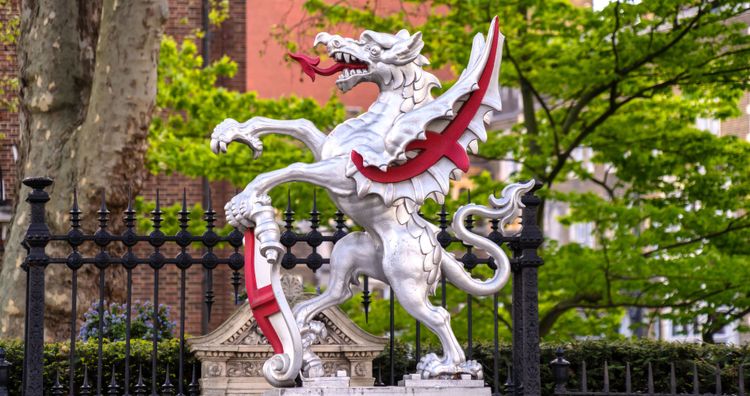
A symbol that spans the ages
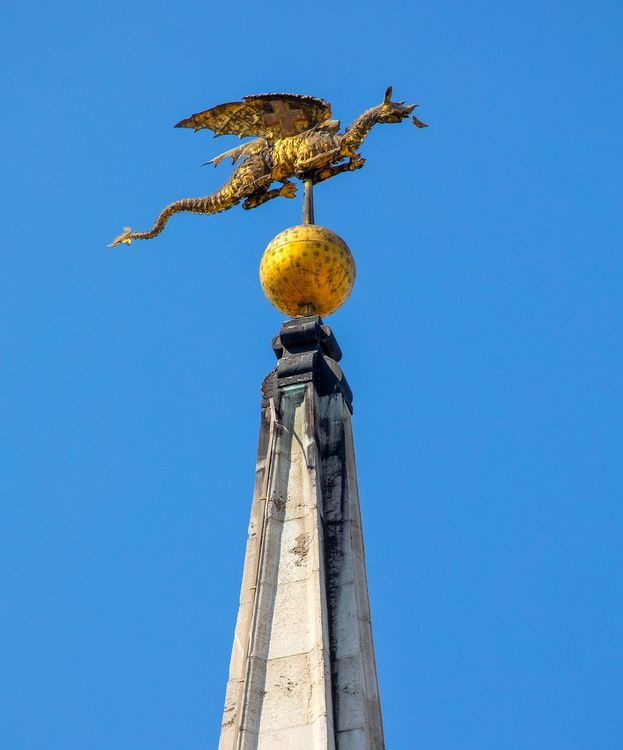
Gilded dragon on the spire of St. Mary-le-Bow church in the City.
- © chrisdorney / ShutterstockThe symbol of the dragon is the only strong icon that relates to an imaginary creature. That's how deeply it has influenced Anglo-Saxon culture, and how long it has endured, both in the past and in the future. It is even more prevalent on the other side of the planet, in China. This ubiquity may stem from ancestral beliefs born of the discovery of dinosaur fossils. People would have feared that living specimens of this animal might attack them. The dragon myth was born.
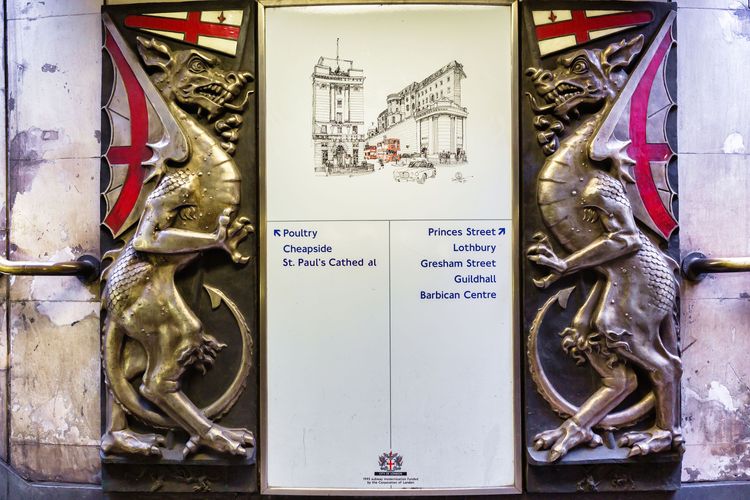
Des dragons jusque dans le métro londonien.
- © Christian Mueller / ShutterstockToday, the media and even scientists like to give the name 'dragon' to creatures that lived millions of years ago. Recently, archaeologists in the Midlands unearthed a fossil of an ichthyosaur that terrorised marine life 180 million years ago. Discovered in a lake in central England, it is known as the "sea dragon".
The figure of the dragon has therefore had plenty of time to regenerate itself in the British collective unconscious. This dragon is ten metres long and its skull weighs a tonne.
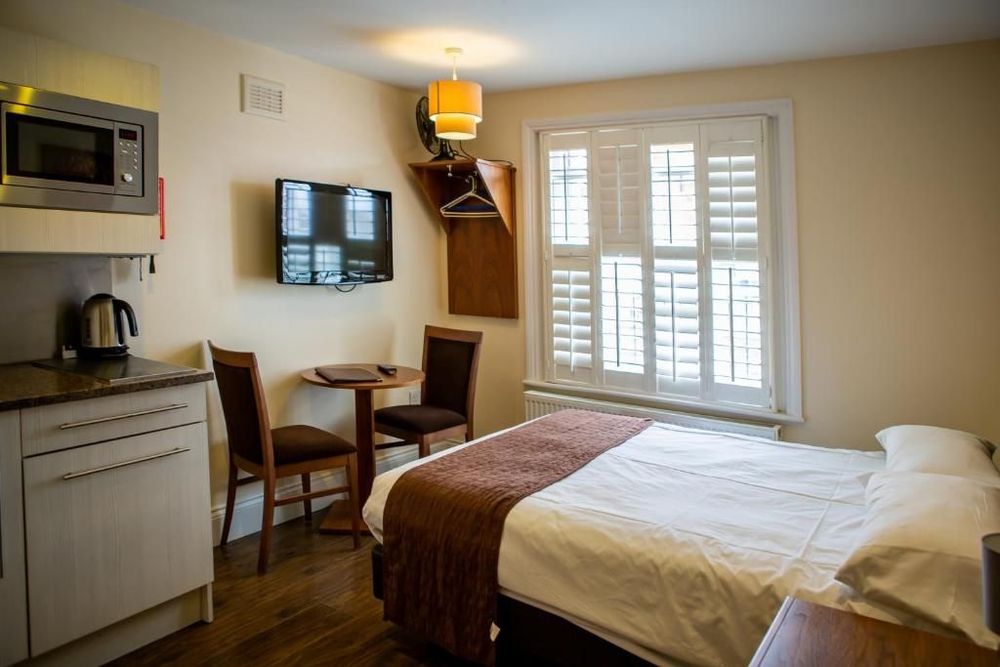 London
London
Marylebone Inn 3* - London
This 3-star hotel offers pretty single, double and quadruple rooms in one of London's best districts!Practical information
📍 Location: the City dragons can be found in Victoria Embankment, Temple Bar, Holborn, Farringdon, Moorgate, Aldersgate, Bishopsgate, Blackfriars Bridge Gate.
They are indicated on this map:
